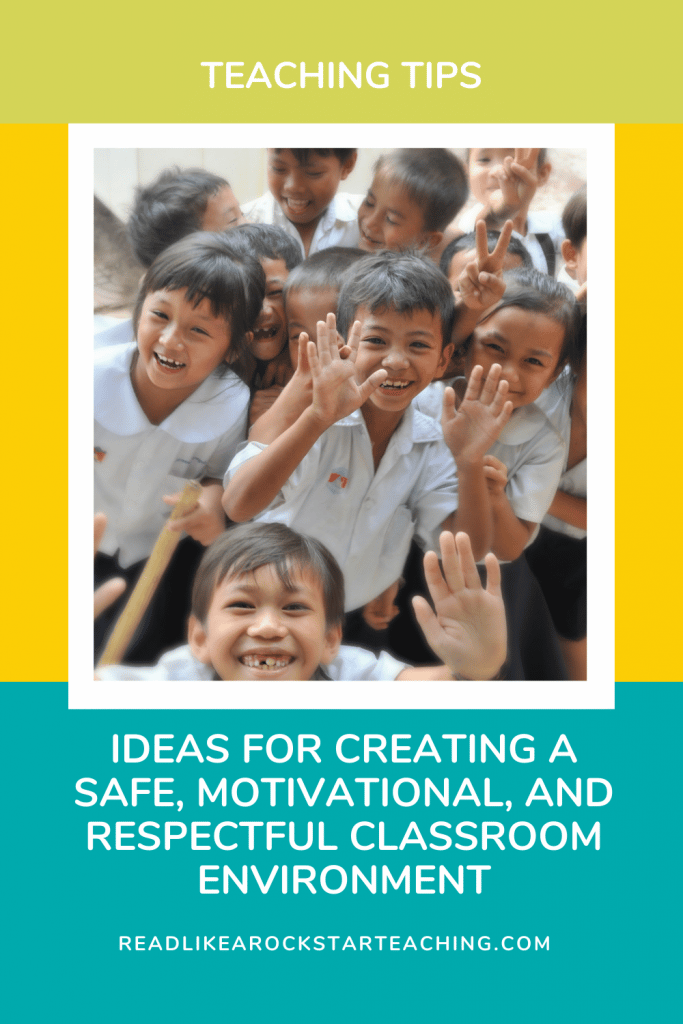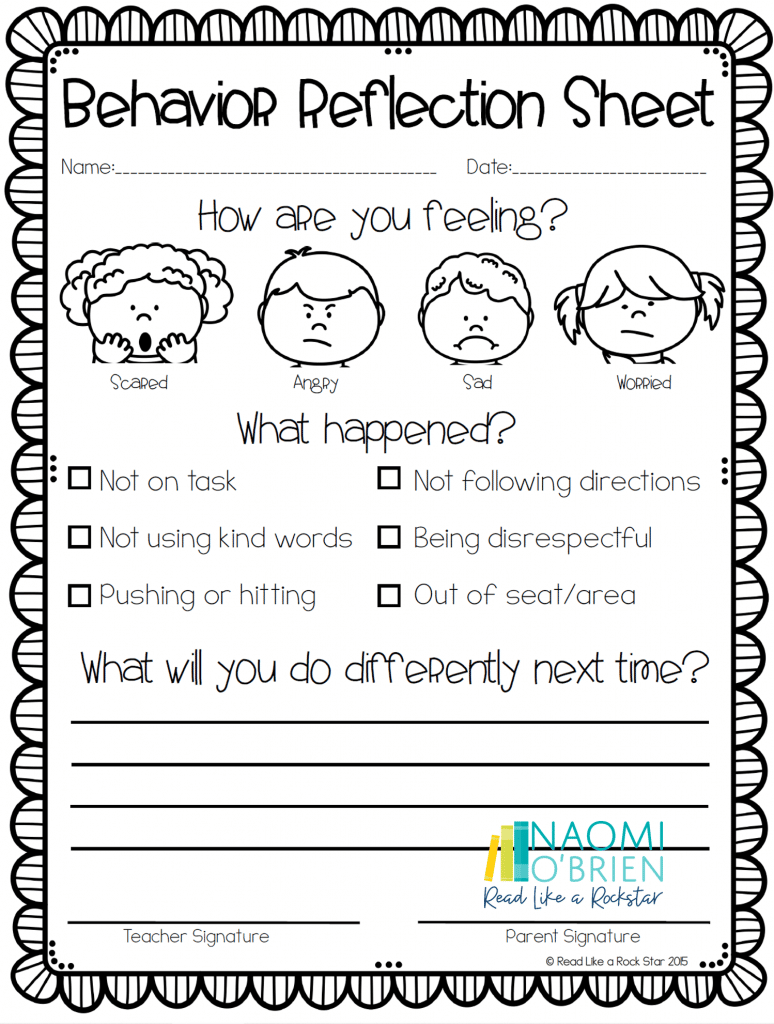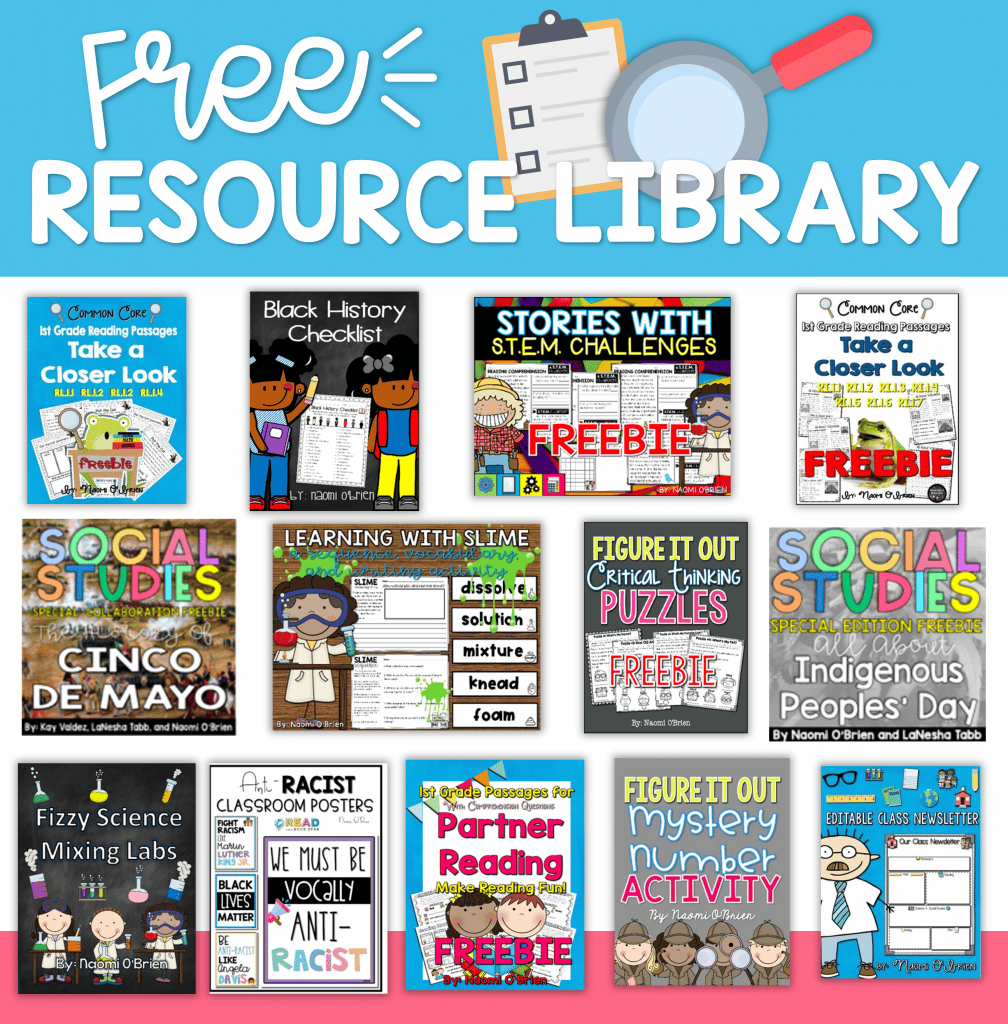

Every year, in addition to academic goals, it is my goal to create a classroom environment that feels safe, motivational and respectful.
I want my students to love school. I want them to make friends. I want to build their self-esteem and confidence. I want them to feel connected to the classroom and their classmates and me. And I want them to feel comfortable taking academic risks in front of one another.
I want to share 5 things I do every year that to intentionally build an environment that does this.
1. Kid of the Day
2. Hundreds Chart Goal
3. Positive Narration
4. Class Compliments
5. Restorative Conversations
Kid of the Day
It’s up to you and your time constraints to decided how often to pick a student to be showered with compliments. I HIGHLY recommend doing this every day. It takes about 4 minutes, and is so worth it if you can fit it in.
We sit in our meeting place and I allow the chosen student to sit in my rocking chair. Everyone claps for this student and smiles at them. I give the student a nice compliment and write it down on my Kid of the Day sheet. The chosen student gets to pick five friends that will give them a compliment. I write down a few of the nice comments on the Kid of the Day sheet.
Last, I ask the chosen student to say something nice about themselves and write it down. They take it home that day and they are always excited!
In order to keep track, I write all of my students’ names down on a clothes pin (or paper) and keep them all in a bucket. I allow the Kid of the Day to pick the next Kid of the Day from the bucket at the end of the day.
Even if a student isn’t having the best day, they can still be the kid of the day. In fact, they probably need it the most.
No one gets skipped over, even if they have a rough day. It’s meant to build them up. They all need that no matter what kind of day they’ve had.


Hundreds Chart Goal
I love setting a long term goal for my students to meet. It’s something to work towards for the entire year, and we get to work on identifying numbers as well. For this, we use the Hundred Squares Goal Sheet.
I post this hundreds chart in my classroom and cut up a different sent of numbers and place them in a bucket.
Then my class decides something BIG we will earn once all 100 squares have been colored in.

They could earn a movie, a Pajama Day, a pizza party, ice cream, extra recess, a S.T.E.M. challenge… whatever floats your boat.
Sometimes, especially with kindergarten, I cut out bigger chunks of numbers (as seen circled in the picture) so that we can reach our goal faster.
As a group, reward your students for desired behavior. Make sure students know which behaviors will earn a square. I like to call out the numbers in a math-y way, like: “This number has 8 tens and 2 ones.” Great for place value practice!
For fun, I like to give small prizes each time a row of 10 is filled in. For example, if we filled in row 21-30, everyone might get a sticker, quick brain break, a fun eraser, or some small item that we previously agreed upon. This helps them stay motivated on the way to 100.
For a 2nd grade class one year, each time we filled in a row of 10, they got to watch a YouTube music video. (We watched a lot of “What Does the Fox Say?” that year.)
Positive Narration
Positive narration is exactly what it sounds like. You will ignore the negative behavior you’re seeing (unless, of course, it is unsafe and/or stopping learning from happening) and you will narrate the positive things you see.
Let’s say you ask your students to push in their chairs and line up quietly at the door. Instead of correcting the 2 kids that ran, the 3 kids that are talking loudly, and the 5 kids who forgot to push their chairs in, you will focus on the kids who followed directions and say, “I love that LaNesha pushed in her chair and lined up quietly. Thank you for following directions.” “I also see that Vera and Derrick pushed their chairs in and are in line quietly. Thank you for setting a great example.”
This will usually get those few students to go back and push in their chairs and stop talking. And if they do, give them some positive narration, too!
If students still haven’t followed directions, repeating the expectation may be needed. You might say, “The expectation was for everyone to push in their chairs and line up quietly. Can someone model this for us? A few friends forgot.”
In my experience, this approach works well in most general education classrooms, K-2.
If students continue to disregard directions, a one-on-one conversation may be in order to find out what’s going on. Students that seem attention-seeking, may be connection seeking. Find out what they need to be successful. I always remind my students that I care so much about them being safe, having, fun and learning. I like to ask what I can do to help. I usually say something like, “I’m trying to help all of you get to second grade, what’s going on? How can I help you?”
Even if positive narration doesn’t seem to be working at first, if you send a clear and consistent message of the behaviors you are looking for, your students will learn your expectations quickly.
I also want to add that if ever you are addressing unwanted behaviors and you are asking a child to stop doing something, make sure are telling them what to replace that behavior with instead.
You can say “Stop running!” but they might take that as an invitation to start skipping instead. You know how some kids can be!
So be clear: “Please stop running. It’s not safe. I’d like for you to walk to the door.”
Class Compliments
I know you’re probably thinking, “Compliments? Again?”
Yes! Listen. These quick little activities go a long way. The kids are happy. They are bonding. They feel seen.

For this to work you need a sheet of paper or even a white paper plate. I pass out markers to all of the students and they write their names in the middle of the paper (or plate). Then I give them time to walk around and write down a compliment on their friends’ papers. The compliments paper shown above is apart of a classroom environment pack I created.
In kindergarten and in the beginning of first grade, we brainstormed compliments and I wrote them down on the board so students could spell what they wanted to. They also added their names after they wrote a compliment.
Activities like this make my students so happy! They are eager to get home and show their families and caregivers. They show the principal and everyone they pass in the hallways, and you can immediately see how it changes the relationships in your classroom.
Tip: Remind students to write as small as possible and not to write over what someone else wrote.
I also keep track of compliments that I give the kids orally, and compliments anyone from outside of our classroom gives them!
If I say, “Wow, everyone is working so well right now.” I would put a tally on the board under Teacher Compliments.
If someone on the school campus says something like, “Mrs. O’Brien, I really like your line today.” then I would add a tally to the Class Compliments.
My students were always so proud of themselves and it gave them a way to bond as the worked on and earned things together as a community.
Restorative Conversations
In my opinion, one of the quickest ways to make a child feel like they are a classroom outcast, is to fail to have restorative conversations after an incident has a occurred.
As educators, we can not hold grudges and continue to keep walls up that make our students feel unwelcome. If they’ve had to go to the calm down area, leave the room, or had an outburst, please make it your mission to connect with them and remind them that they are still a valued member of the classroom and talk through what happened.
What triggered them?
What can YOU do different next time to support them?
What do they wish they did different this time?
What do they think should happen next?

Get students to name their feelings. You may have to teach them how to name their emotions and give them strategies to use the next time they are having big feelings. (Hug yourself, get water, breathe, count to 10)
I use a behavior reflection sheet and talk things over with my students. My students quickly learn that at some point, before the end of the day, we will have a private, calm, restorative conversation, where I seek to understand what happened and reconnect with them. I let them know how the situation made me feel as well. Naming and validating feelings is important to me. We also make a plan to do better the next time.
Hopeful one or all of these ideas are useful to you and your students.



| Cookie | Duration | Description |
|---|---|---|
| cookielawinfo-checkbox-analytics | 11 months | This cookie is set by GDPR Cookie Consent plugin. The cookie is used to store the user consent for the cookies in the category "Analytics". |
| cookielawinfo-checkbox-functional | 11 months | The cookie is set by GDPR cookie consent to record the user consent for the cookies in the category "Functional". |
| cookielawinfo-checkbox-necessary | 11 months | This cookie is set by GDPR Cookie Consent plugin. The cookies is used to store the user consent for the cookies in the category "Necessary". |
| cookielawinfo-checkbox-others | 11 months | This cookie is set by GDPR Cookie Consent plugin. The cookie is used to store the user consent for the cookies in the category "Other. |
| cookielawinfo-checkbox-performance | 11 months | This cookie is set by GDPR Cookie Consent plugin. The cookie is used to store the user consent for the cookies in the category "Performance". |
| viewed_cookie_policy | 11 months | The cookie is set by the GDPR Cookie Consent plugin and is used to store whether or not user has consented to the use of cookies. It does not store any personal data. |
Thank you for your interest in booking a private professional development experience! Please fill out our Booking Inquiry form and a member of our team will contact you soon.